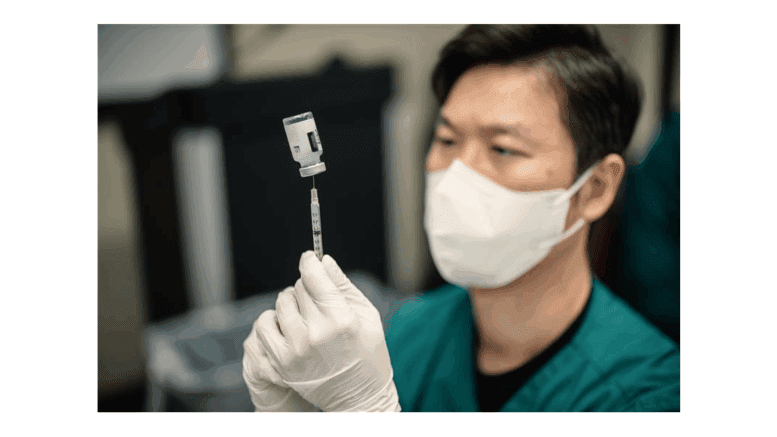Photos courtesy of Wellstar Health System
Wellstar Health System submitted the following article warning of the recent alarming increase in measles cases:
Measles cases are increasing in the United States, with more people getting the virus so far this year than in any year in the last 30 years, according to new federal data. Because of this, the Centers for Disease Control and Prevention (CDC) is raising concerns.
New data shows there have been at least 27 measles outbreaks this year, with 1,288 confirmed cases in 39 states, including Georgia. Most of those affected (36%) are kids and teenagers. In comparison, the U.S. had 285 cases and 16 outbreaks in all of 2024. This makes the current outbreak the largest since 1992.
Measles is not like a seasonal virus. It’s an airborne disease that spreads easily and can be serious. It often flares during busy travel times or when unvaccinated individuals are in close proximity, such as at summer camps.

Dr. Andrew Thornton, lead urgent care physician at Wellstar Health System, explained why we are at risk of contracting measles when we’re traveling.
“Travel always poses specific risk because of the number of people that you are in contact with,” Thornton shared. “Airborne particles from the measles virus remain in the air for up to two hours after a person has been in that area. So, you could potentially contract measles by being in a space after the contagious person is long gone.”
Dr. Thornton went on to explain that starting at age one the measles vaccine is the best protection against contracting the virus and if you are unsure of your vaccine status a simple titer blood test can help determine your levels of immunity.
The CDC says more than 90% of people who got measles weren’t vaccinated, and three people died. About 4% had only one dose of the MMR vaccine, and another 4% had both doses. That’s why it’s important to get two doses: the first at 12 to 15 months old, and the second at 4 to 6 years old. One dose works about 93% of the time, and two doses about 97%.
Herd immunity means enough people are protected so the disease can’t spread easily. This usually happens when over 95% of people in a community are vaccinated.
While upper respiratory symptoms are common in many illnesses, one distinguishing feature of measles is a red, blotchy rash that typically appears a few days after initial symptoms. Here are the common signs to look out for:
- High fever: Measles can cause a fever that may spike above 104°F (40°C).
- Persistent cough: Often one of the first signs to develop.
- Runny nose: A frequent early symptom.
- Red, watery eyes (conjunctivitis): Inflammation and irritation of the eyes are characteristic.
- Rash: The measles rash usually begins as small, flat red spots—sometimes with raised bumps—starting near the hairline and spreading downward across the body.
- Koplik Spots: White or bluish white spots on a red base seen in the cheeks, usually near the molar teeth, which appear between days 2 and 6.
If you suspect exposure or notice symptoms, monitor your health closely for up to 3 weeks. Contact your healthcare provider promptly if you or your child develops a fever and rash, especially after known exposure.
Patients can contact the Georgia Department of Public Health (DPH) at 404-657-2700 for more guidance.
